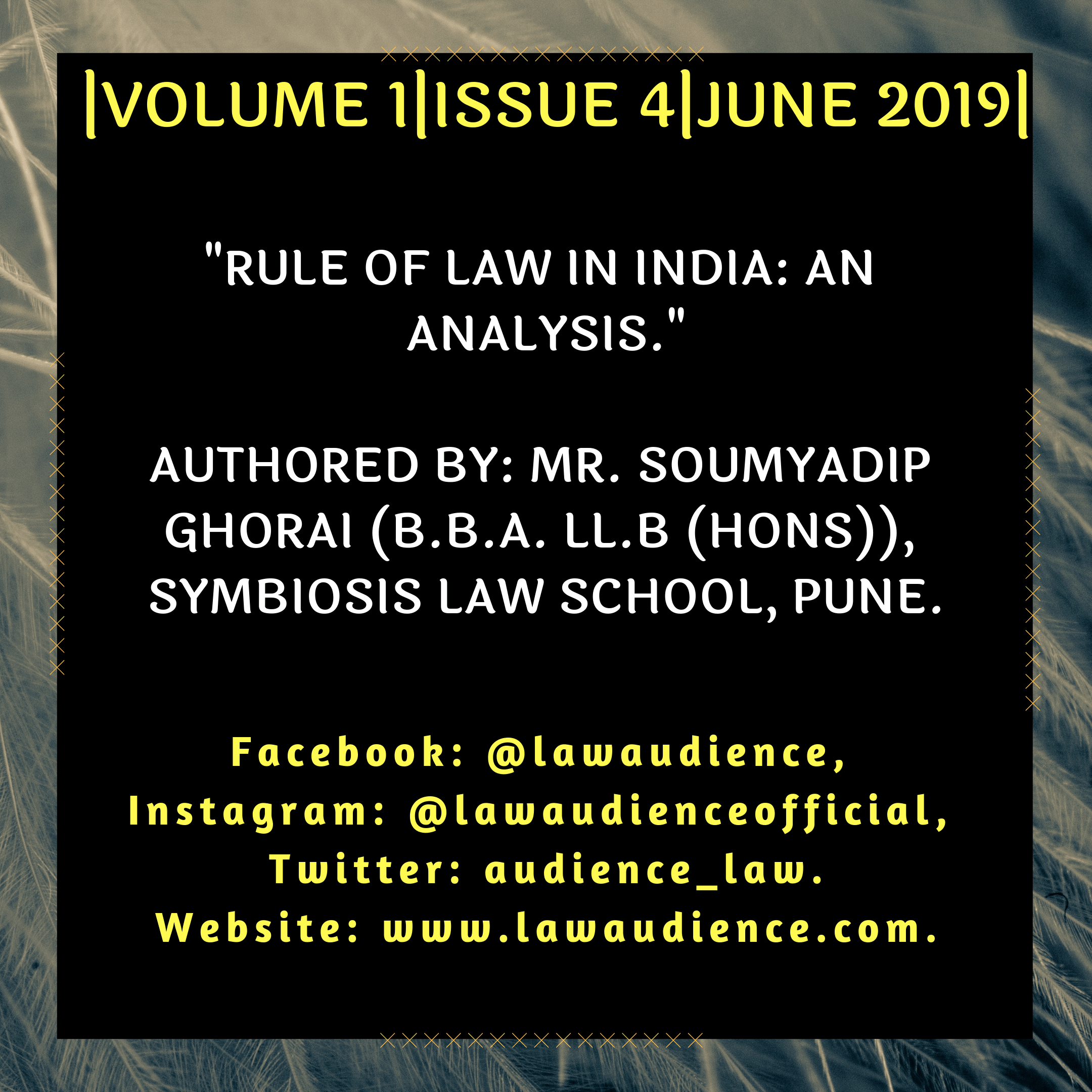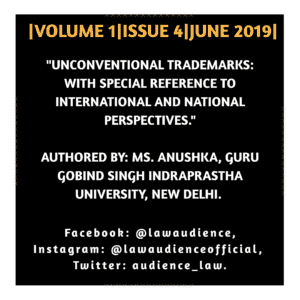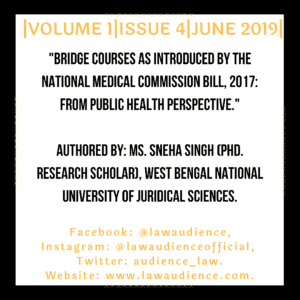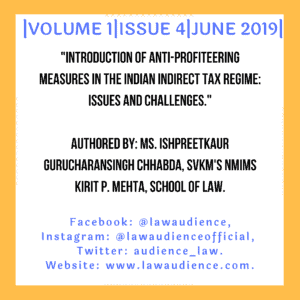Authored By: Mr. Soumyadip Ghorai (B.B.A. LL.B (Hons)), Symbiosis Law School, Pune.
I. ABSTRACT:
“This research article endeavours to discuss what “Rule of Law” is and thereby provide instances in India where Rule of Law has been ignored and thereby giving allegiance to Rule of Men. To achieve this particular goal the article discusses a constitutional provision, two Supreme Court judgements and two statutory provisions so that most of the aspect of the law relating to India is covered. The protection provided to the president and the governors is a point of contention as they are provided with some protection which is directly violative of “Equality of Men” and concept of Rule of Law.
Then it comes to a landmark judgement of Sabarimala Temple and tries to look into the matter how an Apex Court judgement is being overturned by the people who have charge over the temple and thus “Supremacy of Law” is being violated.
The article also talks about one of India’s most controversial case, ADM Jabalpur case and thus goes on to describe how Rule of Law was not followed in the majority judgment and how Rule of Law was an integral part of Justice H R Khanna’s decent on the judgement. Next, it talks about a statute which prohibits cigarette smoking in public place and how this particular statue is totally overlooked by the people at large and thus has lost its value of enforceability. Lastly, it talks about a provision under which an organization authorized by the central government can keep a check and collect data from any form of internet source and thus a way about to get around the landmark judgement of Right to Privacy.”
II. INTRODUCTION:
“Rule of Law” is the building block on which almost all the modern societies of the world are based on. The term “Rule of Law” is derived from a French phrase “La Principle de Legality”, which means “the principle of legality”. In a border sense “Rule of Law” means Law is supreme and no individual is above law. In a narrow sense “Rule of Law” implies that government authorities must be exercised in accordance with the law which was adopted through established procedure.
It carries the spirit of the slogan “a government of laws, not men”. “Rule of Law” doesn’t provide for anything specific like the Fundamental Rights, Directive Principles of State Policy, Principles of Equity, etc. but what it does is provides two basic concepts i.e. (1) Law must be obeyed by the people and (2) Law must be able to guide the behaviors of others.
III. ORIGIN OF RULE OF LAW:
The origin of “Rule of Law” goes back to the thirteen centuries when a judge Barton during the reign of Henry III wrote, “The king himself ought to be subject to God and the law because the law makes him king.” which is the essence of “Rule of Law”[1]. Sir Edward Coke is known to be the founder of the theory of “Rule of Law”, according to him the king must be under God and the law.[2] In India, the concept of “Rule of Law” can be traced down to the Upanishads which say that Law is the King of Kings. But the main credit for the development can be given to Prof. A V Dicey who in its classic book, “Introduction to the Study of the Law of the Constitution” published in the year 1885 tried to develop the concept of “Rule of Law”.
IV. DICEY’S THEORY OF RULE OF LAW AND ITS RELEVANCE:
Dicey’s theory of “Rule of Law” had three main principles[3]:
IV.I SUPREMACY OF LAW:
As per Dicey “Rule of Law” means absolute supremacy of law and “no man is punishable or can lawfully be made to suffer in body or goods except for a distinct breach of law established in the ordinary legal manner before the Courts of the land”. Dicey was with the view that the government and the people should adhere to the laws of the land[4].
IV.II EQUALITY BEFORE LAW:
Dicey’s concept on equality before the law came from the Nepolian Court system where the Courts to deal with the matters relating to the government officials were different from normal Courts and said that whether it being a government official or a normal citizen everyone should be treated equally[5].
IV.III PREDOMINANCE OF LEGAL SPRIT:
Dicey which propounding the third principle compared England with other countries where the rights are written down in the form of a constitution, but in England, there is no written constitution and the rights which the people enjoy are the result of judicial decisions[6].
V. CRITICISM OF DICEY’S THEORY:
Although Dicey has propounded the three main principles of “Rule of Law” there are a lot of criticisms of Dicey’s theory. Some of them being[7]:
- When Dicey founded the “Equality before law” principle, his main focus was on the Napoleon judicial system which had two different Courts one for normal citizens and the other was to settle the dispute against administrative authorities. The second type of Courts were preceded over by other administrative authorities and this according to Dicey was violative of “Rule of Law” as there lies a very probable situation that bias will be reflected in the judgements of those Courts. But Dicey failed to recognize that there was another appeal authority which was preceded by judges which didn’t have any connection with the administrative authorities.
- According to Dicey, England follows the principle of “Rule of Law”, but the main problem with Dicey’s theory is that the parliament in the United Kingdom is formed on the basis of Magna Carta in 1215 which was given to the people by the then king, King, King John, and was not given by the people to themselves which was a sheer violation of equality of law.
- When Dicey gave the principle of “Supremacy of Law” he understood the law to be very clear and fixed, whereas, in fact, the condition in England was contrary as there was no codification of law.
- Dicey’s theory of “Rule of Law” doesn’t even distinguish between the regimes which are democratic with those who violate human rights. For example, in Germany during the period of Hitler according to the theory of Dicey one should uphold the supremacy of law and entail a predominance of legal spirit without even acknowledging the fact that the law in force is nothing but against the theory of natural justice.
Although Dicey has framed the principles of “Rule of Law”, still it is very difficult to define what “Rule of Law” is as it is a very subjective term. Every people have their own notion of what “Rule of Law” is, some think that it is the supremacy of law whereas some think that it is a combination of principles like clarity, equality, etc. Some of the very common ingredients of “Rule of Law” are:
- A government bound and ruled by law
- Equality of law
- Establishment of law and order
- Efficient and effective application of justice
- Protection of human rights
“Rule of Law” as per Dicey isn’t applicable in India as we have a written constitution which has its formation as per the rule of social contract theory[8]. In India, the situation is quite complex. Situations are there where all the principles of Rule of Law are evidently visible but there are dark situations in the Indian scenario when Rule of Law is given a complete second track.
The Apex Court in India ruled that the rule of equality is a basic feature that has to be followed in case of public employment which is the basic structure of the constitution and thus Rule of Law is the core of our constitution.[9] Even the High Court of Jammu and Kashmir reiterated the same principle as the Supreme Court when they said that the Rule of Law is the basic structure of the constitution.[10]
VI. CASE STUDIES ON RULE OF LAW IN INDIA:
Instances in India where Rule of Law is predominantly not followed:
VI.I PROTECTIONS GIVEN TO THE PRESIDENT AND GOVERNORS:
India follows the legal maxim “Rex Non Potest Peccare” which means King can do no wrong. Article 361 of the Indian Constitution is an indication to the maxim. According to the article: “The President, or the Governor or Rajpramukh of a State, shall not be answerable to any Court for the exercise and performance of the powers and duties of his office or for any act done or purporting to be done by him in the exercise and performance of those powers and duties”[11], “No criminal proceedings whatsoever shall be instituted or continued against the President, or the Governor of a State, in any Court during his term of office”[12], “No process for the arrest or imprisonment of the President, or the Governor of a State, shall issue from any Court during his term of office”[13].
These provisions are clear exceptions to the Rule of Law in India to extend some immunity to the president, governors or rajpramukh of a state.[14] In an idealistic Rule of Law centric society, such exceptions shouldn’t be allowed and thus this amounts to a violation fo the theory of rule of law propounded by A. V. Dicey.
VI.II THE SABARIMALA TEMPLE ISSUE[15]:
The case is related to Sabarimala Sree Dharmashastra Temple which is located in Pathanamthitta district of Kerala. At Sabarimala, the deity is worshipped as Ayyappan who is the son of godson. Lord Ayyappan is believed to be a “sanyasi” and thus women ageing from 10-50 are restricted from entering the premises of the temple. This particular practice was recognized under Rule 3(b)[16]. A Public Interest Litigation (PIL) was filed in the Kerala High Court against the Devaswom board which was entrusted with the responsibility of maintenance of the temple. The Kerala High Court ruled in the favour of the board thus upholding Rule 3(b)[17].
The judgement of the Kerala High Court was challenged in the Supreme Court of India. The Apex Court recognized that for a particular rule to hold good it must be in conformity with two provisions, firstly it must be in conformity with the statues in force and secondly, the rulemaking authority should have the power to frame such rules and if any one of these conditions are not fulfilled then the rule in question is said to be void.[18] Supreme Court of India ruled out that the impugned judgement and practice is violative of Article 25[19] of the Constitution and thus struck it down.
According to Article 141 of the Constitution says that judgement by the Supreme Court should take the shape of the law. The effect of this Supreme Court judgement is almost nil and thus shows us that Supremacy of Law was violated in this scenario which is a very important principle of Rule of Law. When people came to know that two women of menstruating age, Bindu and Kanakadurga, entered the temple there were outright violent protests across the state with protesters pelting stones and blocking national highways. There were even several rallies conducted by political parties in protest of the incident of women entering the temple premises. These series of incidents show us that there is still a predominance of “Rule of men” over “Rule of Law”.
VI.III ADM JABALPUR CASE[20]:
The case in question was in relation to the presidential order which was passed on the 27th of June, 1975 during the period of emergency. This particular presidential order curtailed the rights of the people under Article 226[21] of the Constitution of India to file a writ petition for the writ of Habeas Corpus. The Supreme Court upheld in the ADM Jabalpur case that Liberty is confined and controlled by law, whether common law or statutes, and thus stated that the persons didn’t have a locus standi to file a case under the writ of Habeas Corpus in the High Courts as it is not ruled illegal and is based on extraneous considerations.
But Justice H. R. Khanna gave a dissenting judgement stating that Article 21[22] of the Indian Constitution is basic assumptions of Rule of Law. He specifically stated, “Without such sanctity of life and liberty, the distinction between a lawless society and one governed by laws would cease to have any meaning.”[23]
In the later landmark judgement of Kesavananda Bharti[24], the Apex Court ruled that the parliament can’t amend or change the basic structure of the Constitution of India, and Article 21 of the Constitution of India is also considered under the basic structure of the constitution.
The ADM Jabalpur case was finally overruled by Justice Dr. D. Y. Chandrachud in the “Right to Privacy” case[25], where Justice Chandrachud states, “The judgement rendered by all the four judges constituting the majority in ADM Jabalpur are seriously flawed. Life and personal liberty are inalienable to human existence. These rights are, as recognized in Kesavananda Bharati, primordial rights. They constitute rights under natural law. The human element in the life of the individual founded on the sanctity of life.”
Thus, this judgement shows us that how the rule of law can be bypassed and give importance to the Rule of Men which would be reflected due to political, etc. conditions of the nation.
VI.IV PROHIBITION OF CIGARETTE SMOKING IN PUBLIC PLACES:
The Kerala High Court on 12th of July, 1999 passed a judgment which stated that public health is endangered by passive smoking and thus violative of Article 21[26] of the Constitution of India. if smoking in public places is exercised[27]. The Apex Court on 2nd November of 2001 passed a judgement stating the adverse effects of smoking in public place and also said that one should abstain from smoking in public place as mainly passive smoking can’t be allowed at any cost, and also mentioned that this particular judgment to hold good till the parliament makes a legislation on the particular topic.[28]
In the year 2003, the parliament passed the Cigarettes and other Tobacco Products (Prohibition of Advertisement and Regulation of Trade and Commerce, Production, Supply and Distribution) Act, 2003.
This legislation was the one that replaced the 2001 judgement. Section 4[29] of the above-mentioned acts states that “No person shall smoke in a public place”, if anyone goes against Section 4 then he shall be punishable with ₹200/- (Two Hundred) under Section 21 of the same act. Even the State of Gujrat went a step further in 2017 when they banned ‘Hookah’ and imposed a fine of maximum ₹50,000 (Fifty Thousand) and a minimum of ₹20,000 (Twenty Thousand) coupled with imprisonment which may extend to three years but not less than one year.[30]
Now if we move our attention to reality then we can see that these laws on smoking in the public place is least cared about. People are often seen smoking in the public which shows that it is the “Rule of Man” that prevails because it is what the people want is in force and not what the law proclaims, thus violating supremacy of law.
VI.V SECTION 69 OF INFORMATION TECHNOLOGY ACT, 2000:
“Right to Privacy” is recognized as a right under Article 21[31] of the Constitution of India by the Apex Court in India.[32] This particular judgement was passed on 24th August, 2017 but the judgement did not consider Section 69[33] of the Information Technology Act, 2000 and Section 69(b)[34]of the Information Technology Act, 2000. Although the Supreme Court tried to confer Right to Privacy through a judicial judgement, its effect has been nullified by these two sections. This section in a way gives rights to the central government to breach any citizens’ privacy and collect information. Law declared by the Supreme Court of India should take the shape of law in its jurisdiction.[35] This should mean that the Right to Privacy judgement should be followed as law in India which should be supreme in its field. But the fact that these two sections are still not declared ultra vires by the Supreme Court[36] is a violation of Rule of law. The supremacy of Law which is an essential element of Rule of Law is directly violated by these sections.
VII. CONCLUSION:
Looking at the above-cited examples it is very difficult to say that India follows the Rule of Law over Rule of Men. Even if we take Rule of Law as a separate and abstract entity then also, we get to see that it is men who are framing laws for the other men to follow and thus is Rule of men in the veil of Rule of Law[37], and hence though Rule of Law seems to the best theory as to how law should work, it seems to be a far fetched notion in the Indian context.
[1]Ryan, Kevin (2005). “Lex et Ratio: Coke, the Rule of Law and Executive Power”. Vermont Bar Journal. 2005 (Spring). ISSN 0748-4925.
[2]https://www.lawteacher.net/free-law-essays/administrative-law/origin-and-concept-of-rule-of-law-administrative-law-essay.php#ftn4 (last viewed on 12/1/19 03:12).
[3] A. V. Dicey, Introduction to the study of Law.
[4] Ibid.
[5] Ibid.
[6] Ibid.
[7] Ibid.
[8] Where people of the nation come together and give their powers to an entity in whose return, they get rights and have to fulfil some obligation in the form of rights. The Preamble of the Constitution of India is the best example of Social contract theory as it states “We the people do hearby adopt, enact, and give to ourselves this constitution.”.
[9] The State of Bihar and Ors. vs. Kirti Narayan Prasad, 2018 (15) SCALE 352.
[10] Niva Sinha & Ors. vs. State of J&K and Ors., 2018 SCC OnLine J&K 1000.
[11] Article 361(1) of The Constitution of India.
[12] Article 361(2) of The Constitution of India.
[13] Article 361(3) of The Constitution of India.
[14]http://epao.net/epSubPageExtractor.asp?src=education.Human_Rights_Legal.Right_To_Equality_Is_Not_Absolute_But_Highly_Qualified_Under_The_Constitution_Of_India_By_Arjun (last viewed on 21:30 on 08.05.2019).
[15] Indian Young Lawyers Association and Ors. vs. The state of Kerala and Ors., 2018 (8) SCJ 609.
[16] The Kerala Hindu Places of Public Worship (Authorization of Entry) Rules, 1965.
[17] Indian Young Lawyers Association and Ors. vs. The state of Kerala and Ors., 2018 (8) SCJ 609.
[18] General Officer Commanding-in-Chief vs. Dr. Subhas Chandra Yadav, AIR 1988 SC 876.
[19] Freedom of conscience and free profession, practice and propagation of religion.
[20] Additional District Magistrate, Jabalpur vs. Shivakant Shukla, AIR 1967 SC 1207.
[21] Power of the High Courts to issue certain writs.
[22] Right to life and personal liberty.
[23] Freedom of conscience and free profession, practice and propagation of religion.
[24] His Holiness Kesavananda Bharti Sripadagalvaru and Ors. vs. State of Kerala and Anr., AIR 1973 SC 1461.
[25] Justice K. S. Puttaswamy and Ors. vs. Union of India and Ors., AIR 2017 SC 4161.
[26] Power of the High Courts to issue certain writs.
[27] K. Ramakrishnan and Anr. vs. State of Kerala and Ors., AIR 1999 Ker 385.
[28] Murli S. Deora vs. Union of India and Ors., AIR 2002 SC 40.
[29] Cigarettes and other Tobacco Products (Prohibition of advertisement and Regulation of Trade and Commerce, Production, Supply and Distribution) Act, 2003.
[30] Cigarettes and Other Tobacco Products (Prohibition of Advertisement and Regulation of Trade and Commerce, Production, Supply and Distribution) (Gujarat Amendment) Act, 2017.
[31] Fundamental Right regarding Right to life and personal liberty.
[32] Justice K. S. Puttaswamy and Ors. vs. Union of India and Ors., AIR 2017 SC 4161.
[33] Power to issue directions for interception or monitoring or decryption of any information through any computer resource.
[34] Power to authorize to monitor and collect traffic data or information through any computer resource for cyber security.
[35] Article 141 of the Constitution of India: Law declared by Supreme Court to be binding on all courts The law declared by the Supreme Court shall be binding on all courts within the territory of India.
[36] Article 13 of the Constitution of India: The State shall not make any law which takes away or abridges the rights conferred by this Part and any law made in contravention of this clause shall, to the extent of the contravention, be void.
[37] Contra: An Introduction to the study of law of Constitution, by A. V. Dicey.



